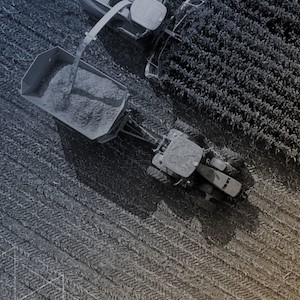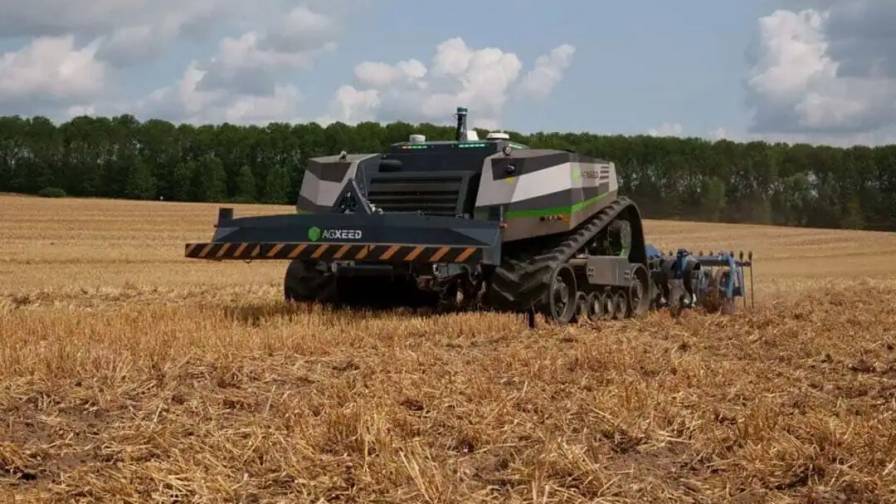Making Sense of the 4 V’s of Big Data in Agriculture
Data, data, data. It’s hard to find an article, a post, a conversation in agriculture today that doesn’t mention “data”. But what is it, and what is “big data” when it relates to making decisions across a farm?
For small to large and simple to complex decisions, data is only as good as the information that is received, processed, analyzed, alerted, or stored. For farms to make sense of this information, it is key to look at how these bits and bytes are combined into platforms or delivery tools to inform this decision making process. The 4 V’s of Big Data — Volume, Velocity, Variety, and Veracity — provide a framework that creates value from data for farmers to make informed decisions, as collection alone, as we well know in agriculture, is not the only key. Moving past just nice pictures, printed maps, or stored files we never open again, for this data to provide outcomes that are valuable at the farm gate, it should be able to be tested against the “4 V’s” to make current and future impacts.
The global precision farming market size is anticipated to reach USD 12.9 billion by 2027, according to a new report by Grand View Research, Inc. It is expected to register a CAGR of 13.0% over the forecast period. As precision farming and digital agriculture grow, the amount of data will continue to grow, and as data grows there becomes more information from otherwise unknown conditions relating to human, agronomic, and environmental situations that have been the framework of our farms for years.
We are now creating data, based on the past data that we received, instead of just creating and viewing information or the results of decisions. It is informing decisions based on what we have been provided. “The amount of data we produce every day is truly mind-boggling,” writes Bernard Marr at Forbes. “There are 2.5 quintillion bytes of data created each day at our current pace, but that pace is only accelerating with the growth of the Internet of Things (IoT). Over the last two years alone 90 percent of the data in the world was generated.”
MORE BY SCOTT SPECK
“In the coming years, however, these common units will begin to seem more quaint – that’s because the entire digital universe is expected to reach 44 zettabytes by 2020,” says Jeff Desjardins at World Economic Forum. “If this number is correct, it will mean there are 40 times more bytes than there are stars in the observable universe”
These numbers don’t mean much to me as an agronomist (what is a zettabyte?!), but portray the importance and magnitude that the information we are receiving and creating can have huge impacts on the future — and we are only getting started. While these statistics are for all data generated worldwide, not just for agriculture, it emphasizes the importance of vetting the information we receive on the 4 V’s.
Still with me? All this discussion on data can be overwhelming, but luckily there are people all across agriculture skilled in the art of interpreting and translating this information into usable insights to create impactful decisions. A little bit of science and art, people and machines, working to use technology to make more efficient and profitable decisions creates huge opportunities in the coming years for the digital agriculture space. So, what are the 4 V’s we should be looking at when vetting data platforms, services, providers, and decision making frameworks?
Volume
For collected data to be useful, there has to be a specific volume of it that helps inform decisions. Tools like benchmarking are only as useful as the points inside, and understanding spatial field variability only works if we have a volume of information to choose from. A field that yielded 185 bushels of corn is a point, but knowing the thousands of points in between from the low yield to the high gives us more information to understand that report card and how we can influence it throughout a season. A single point of weather data telling us it is 100 degrees is useful, if we have the volume behind to know if that is good, bad, trending, similar, or different to other locations, and how long that temperature was at that level. A single weather station on a farm can send 34mb of data each year (10 mp3 songs), while a 2,500 acre farm may create 5GB of records during the planting season (3 standard definition movies). As we look at these data sizes over multiple passes, IoT, and FMS to understand it — the volume and size becomes very large for farms alone.
For large volumes of data, it creates opportunity to understand more, but continues to be more complex. At the forefront of precision agriculture, yield maps gave an understanding of what changed across the field, and today we can actually measure and manage dozens of other conditions that influence that map, creating more volume, which can help us identify relationships, causes, and influencers. But we must have ways to sort, filter, analyze, and access this volume of information to be useful.
Velocity
The timing of data we receive is another key part. What good is data on my soils if I get them after I need them or make a decision? Imagery is a great example of this, as a decade ago we could expect to receive an image days after the fact and once a month, that we could access on a desktop computer. Fast forward to today, providers can beam an image to our phone the next day, and provide it every day! The velocity has increased, which can give us access to quicker decisions, but also can make for a larger volume and more complexity. More advanced processing, reliable network sources (like broadband/5G/new networks), and transmission devices such as telemetry have given us an opportunity to increase the velocity of the information we need to make decisions on time, and even get ahead of them with things like predictive analytics.
Variety
In big data, the terms structured, semi-structured, and unstructured can describe the variety of the information a platform receives. For agriculture, we have variety in those forms, but also in the type of data we create. Instead of receiving only a yield map at the end of the year, we have ways to collect, capture, and inform on every condition imaginable — from the moisture in the furrow at planting, the root growth in the middle of the season, to the temperature of the grain in a bin. We can be informed on what the low yielding spot was, or what caused an area of a field to react different compared to what we thought, and react quickly on it.
This variety can be thought of like a puzzle, the more pieces we have, the clearer and more defined a puzzle picture can be, but also the more complex it is to put together — or to translate, interpret, and integrate. With tools and technologies such as Artificial Intelligence (AI), having quick, large volume, and a variety of information is becoming easier to digest and put that puzzle together.
Veracity
One of the most important parts to the 4 V’s in agriculture, is veracity, or the quality of the data. Did I label the monitor correctly? Did I use a yield map with starts/stops, gaps, multiple machines, and calibrations that shows me 10x yield in spots of the field? Did I use that for production sales, or for replacement of fertilizer? Did the benchmark data I was looking at for fertilizer rate include that extra pass I put on of Nitrogen with the pivot? What forms is this data in, and can it be integrated and analyzed?
For data to provide us answers and value, farmers want to analyze data that gives the real answers, not fancy maps or information that is incorrect that I make next year’s decisions on that faulty information, creating that cascading snowball. This is a critical crossroads for us in agriculture, and having more automation and transparency in the processes from seed to harvest will help manage quality and veracity into the future.
Data alone isn’t the answer, especially for agriculture as we will always need to identify the cause and effect of our management, and ensuring that the 4 V’s were met when we made the decision. Complexity seems to be ahead, and the role of trusted partners, advisors, and friends at the farm will have a key role moving forward in this next decade of technology to help push adoption and connect people to technology. Transitioning into a digital mindset is critical, as disruption will continue with the use of big data in agriculture.










